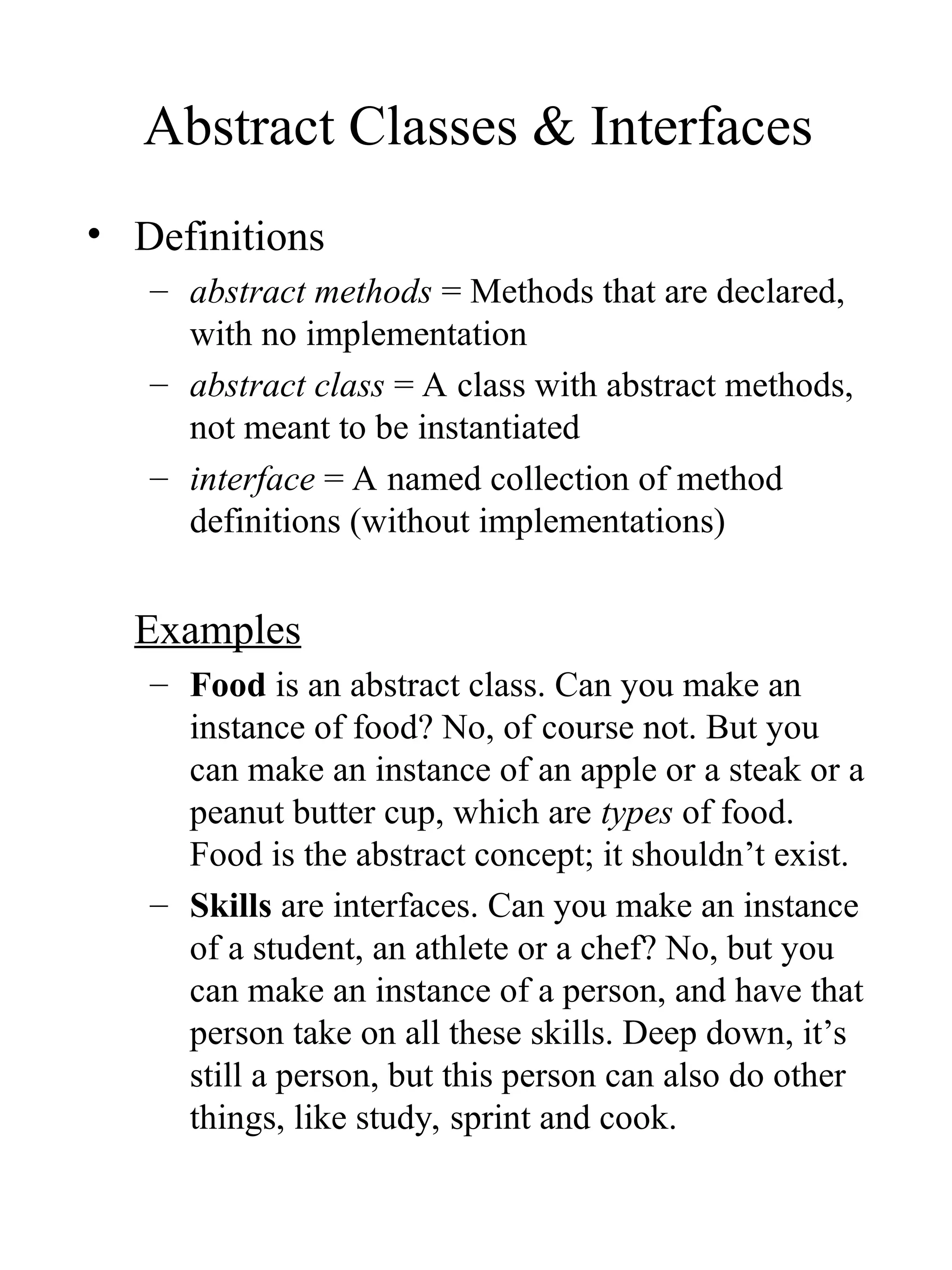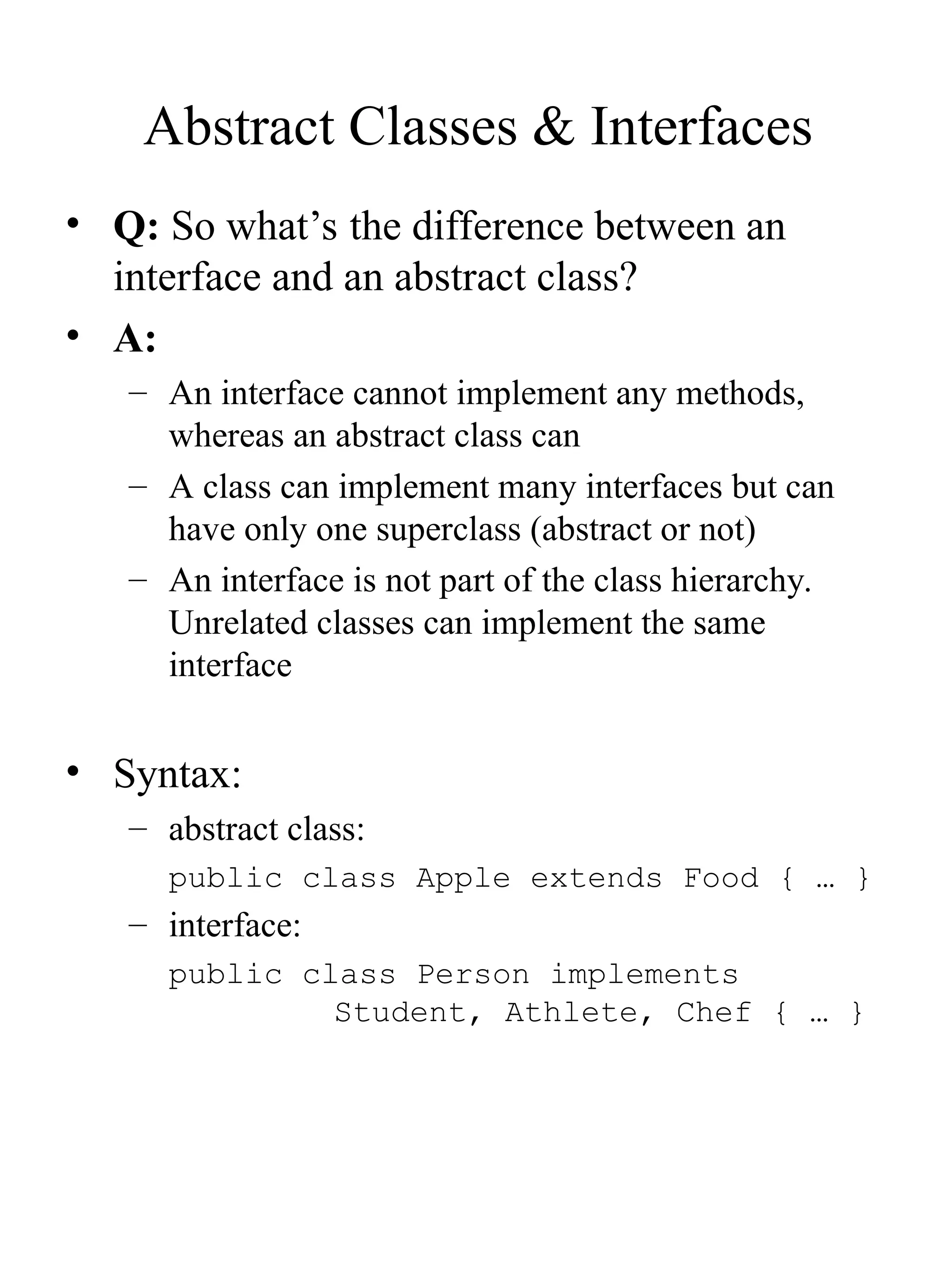The document discusses abstract classes and interfaces in programming, highlighting their definitions, differences, and use cases. Abstract classes can't be instantiated and may contain abstract methods, while interfaces define method collections without implementations and can be implemented by various classes. It also explains the importance of these concepts in inheritance and design patterns, illustrated with examples such as a chess player and robot factory.





